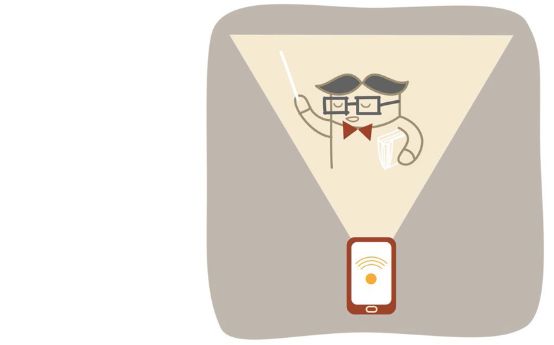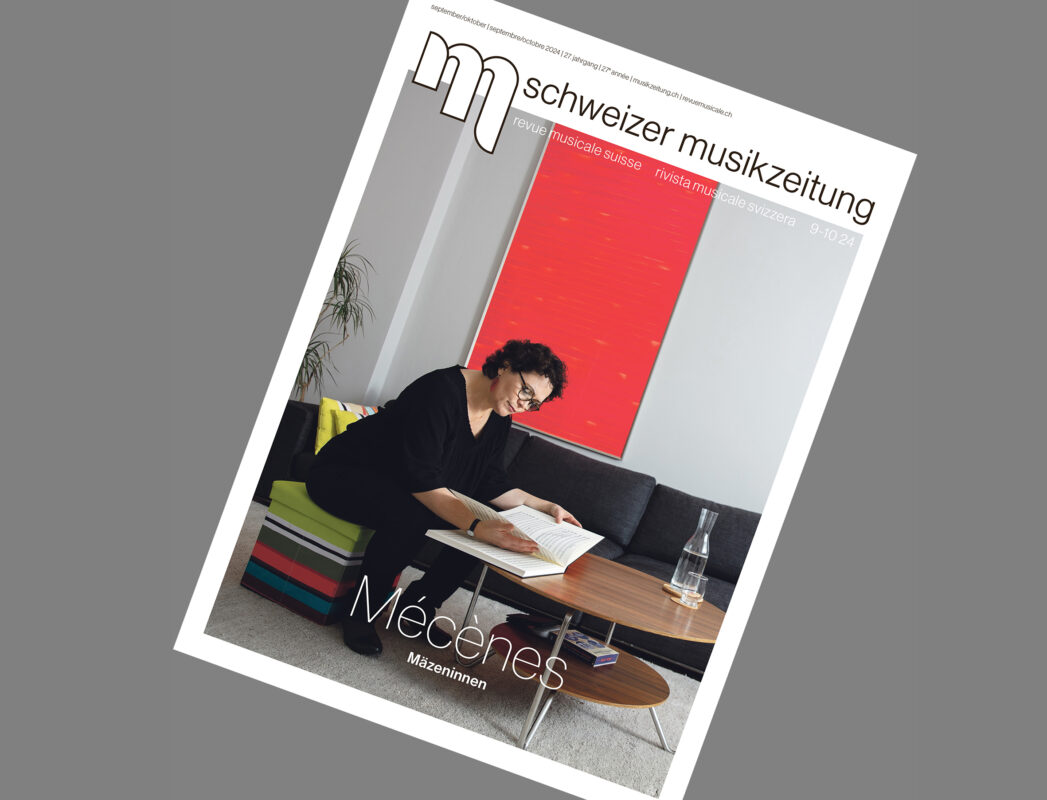E-learning at the music school
The research focus on music education at the Lucerne University of Applied Sciences and Arts tested the e-learning software "Smart Music" together with the Sarnen Music School. A report.


The research focus on music education at the Lucerne University of Applied Sciences and Arts tested the e-learning software "Smart Music" together with the Sarnen Music School. A report.
Everyone is talking about e-learning - but is it also suitable for instrumental/vocal lessons with children and young people? Roland von Flüe, saxophonist and lecturer at the Lucerne University of Applied Sciences and Arts and initiator of a one-year practical test with the e-learning software Smart Music. While the use of laptops, tablets or smartphones and associated programs or apps is already commonplace these days, e-learning still seems to have made little inroads into instrumental and vocal teaching. A small pilot project to provide initial practical insights into the use of e-learning software was launched at the Sarnen Music School, Canton of Obwaldenand carried out by the Research focus on music education at the Lucerne University of Applied Sciences and Arts with professional support. Three instrumental teachers and three adolescent boys were involved in the project; as the practical test was geared towards the constellation of interests of the pupils, the one-sided gender constellation had to be accepted. For the evaluation of the e-learning software, teachers and pupils were provided with templates for keeping a lesson diary, and the initial situation with regard to pupils' motivation and learning behavior was also recorded as a comparative value for possible changes during the pilot phase.
How the platform works
The test product is Smart Musica music learning software with extensive functions. Learners play selected pieces of music from their tablet or computer with the optional inclusion of interactive tools. The paid software is purchased via a license system. An annual license for teachers currently costs USD 140, and USD 40 for students. Smart Music is designed as closed software, which already mentions a major weakness: The file import is only possible in smp, mp3 format or as converted files. Final-file is possible. An export, such as the printing of sheet music, is not possible, probably for copyright reasons. If the annual license is not renewed, all stored data and thus also the created library, i.e. the user's "memory", will be lost.
The application of Smart Music is accessed via the Internet using a computer or tablet, although it is also possible to work offline. The program has two distinct application levels: the interactive music game application for pupils and a virtual classroom to be set up by the teacher. Via the in Smart Music The integrated sheet music library provides sheet music material. The music sheet selected by the teacher and pupil can be played back from the application window, and the pupil's own playing of the sheet music can also be recorded and evaluated by the software. To optimize the recording quality, an external Clip-Micro is recommended - at least for the acoustic instruments clarinet and saxophone used in the test. The numerous functions such as transposition, metronome and tuner, looper, stop in case of errors, tempo selection or the compilation of the accompaniment from a pool of individual instruments are exciting. With the "Follow me" function, the accompaniment adapts to the variable playing tempo, a nice gimmick that takes into account the over-accuracy very well. A cursor guides you through the musical landscapes. Further functions can be used via "Customize" or "Waite for note". The latter is helpful when learning new notes because the accompaniment stops until the correct note is played. There are question marks over the evaluation function, which only checks pitches and rhythmic parameters. The evaluation is done by means of color coding and percentages. It is up to the teacher to make their pupils understand the narrow limits of electronic scoring.
In a virtual classroom to be set up by the teacher, pupils are given specific tasks, the results of which can then be retrieved. The learning behavior of the pupils is visible to the teacher at all times: when, how often and for how long they play and how the practice process progresses can be monitored. This can give rise to a feeling of "big brother is watching you". Or does the social value of protecting the individual and privacy not apply in this case? In any case, teachers are well advised to proactively and transparently communicate their use of monitoring and assessment tools to students and obtain their consent.
The extensive music library contained in the learning platform serves a wide variety of musical styles and contains teaching materials such as scale and sight-reading exercises, methods, etudes and solo pieces in addition to a wide range of standard pieces. The playing material, which is noticeably designed for the American market with its numerous college bands, is not able to meet the needs of European users in all areas, which is why lessons are only possible with Smart Music not recommended. The teachers involved in the test particularly criticized the somewhat meagre and unbalanced range of literature in the jazz segment. On the other hand, the materials can be played with accompaniment, including each individual part of larger arrangements, which can be seen as a plus: after all, what clarinettist in a young band wouldn't want to be able to practise her third part, which is perhaps not exactly overflowing with beautiful melodies, together with the entire orchestral sound!
Positive and problematic aspects
The following list shows the positive and problematic aspects of Smart Musicas shown in the practical text:
Positive aspects
- Pupils (and teachers) can browse through an extensive sheet music library, listen to the pieces and discover new things.
- Exercises, jazz arrangements and simpler pieces can be transposed into all keys.
- You can choose between piano or ensemble for the accompaniments, whereby the samples of the accompanying instruments are of high quality.
- You can import your own material into Smart Music using smp or mp3 files.
- By using the platform (in conjunction with the music notation program Finale), pupils can be encouraged to experiment with materials and/or compose.
- Tracking practice behavior enables the teacher to accompany the students' practice process and provide them with individualized practice tips.
Problematic aspects
- The installation of the software does not seem to run entirely smoothly.
- Use is not optimal without a fast and stable internet connection. Online accessibility is prone to errors, which leads to increased outages.
- The sheet music library contains only a comparatively small number of jazz standards.
- The virtual classroom has a confusing design.
- The evaluation options for tasks follow one-dimensional criteria.
- The program does not recognize played chords (e.g. guitar).
- In contrast to the samples, midi file accompaniments do not sound particularly good.
- Certain arrangements are not licensed for Europe.
- Arrangements and accompanying files cannot be exported or printed, own recordings will be lost if the license is not renewed.
- Pupils cannot decide for themselves whether their teacher follows up on their practice.
Results of the practical test
For the boys involved in the test, the use of the learning software was very motivating, at least initially, but then leveled off again. The appeal of the new, combined with the technical gadgets, seems to have contributed significantly to this initial motivation boost. However, one of the pupils now prefers to play in the traditional way again. One pupil found the assessment system very motivating, as it provides a simple way of keeping track of learning progress. The possibility of adjusting the tempo was also highlighted as positive by one of the pupils. Successful recordings are saved and collected by the students in their personal library, and are gladly called up again later. The extensive music library encourages pupils to browse and discover new musical worlds on their own, although they may need a little help from their teacher to get started.
Learned from the parents Smart Music The parents gave the software a consistently positive assessment, probably referring primarily to the observed boost in motivation and the change in their children's practice behavior. The fact that the software is only available in English was positively noted by one mother as a good example of the practical relevance of what has been learned at school. The teachers involved in the test were rather skeptical about the learning software: "The software is not able to convey many basic elements of music education sufficiently," says Nils Fischer, a graduate of the Master's degree in Music Education Jazz at Lucerne University of Applied Sciences and Arts. Smart Music also leave little scope for creative use of the given and own material. As much as the assessment tools can be motivating, they prevent the competence for self-assessment and personal responsibility. The question is therefore whether what Smart Music from a single source is not better achieved through a combination of different programs. For example, a virtual classroom can be based on Dropbox can be set up, options for arrangements and the possibility to regulate the tempo of accompanying voices can be found at Band-in-a-box or Final.
Due to the small number of participants in our practical test, it is not possible to make any general statements about the students' behavior. However, it can be assumed that young people who are enthusiastic about technology feel addressed by it and that their practicing is more sustainable thanks to targeted tasks and a control function. Marc Scheidegger, electric guitarist and graduate of a CAS in e-learning, said after the practical test: "I won't be renewing Smart Music after my trial subscription expires. In the meantime, there are better suited and more open learning platforms and sheet music programs with an integrated sheet music store for my purposes, such as Moodle or the notation program Guitar Pro with the MySongbook sheet music store. In my opinion, the success of such tools depends on how intuitive and easy they are to use." The first part of this assessment points to one of the most important points when evaluating e-learning software: the suitability of such learning platforms can vary greatly for different instruments.
A student version of Smart Music (without classroom function) can be tested free of charge - so test it if you like! www.smartmusic.com
Further information
Are instrumental/vocal teachers obsolete? - is the somewhat pointed question posed by Nils Fischer in view of the learning habits of many young people who learn an instrument autonomously and only with the help of instructions on the Internet. In Nils Fischer's master's thesis, the functionality, strengths and weaknesses of Smart Music vividly illustrated.
Nils Fischer (2015): Experience with "Smart Music". Master's thesis of the Music Education program. Lucerne: Lucerne University of Applied Sciences and Arts - Music.Available from: nils.fischer@gmx.ch
Information on the origins and history of Smart Music (English)








